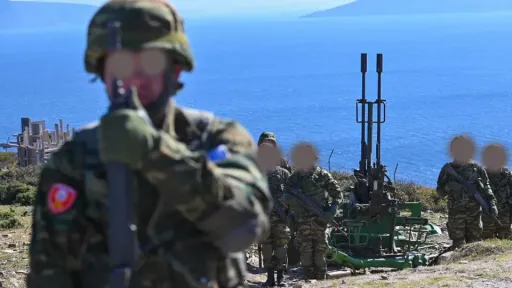Armed Forces plan foresees self-sufficient army units on islands

Plans for the radical redeployment of Greece’s Armed Forces include making smaller units stationed on the Aegean islands entirely self-sufficient, capable, among others, of producing their own food, energy and drinkable water.
Greece’s defense planning has, at least over the past 50 years, focused on defending against an attack from nominal ally Turkey. The topography of the Aegean, with large numbers of inhabited islands, makes them especially vulnerable, since they cannot all be simultaneously guarded and defended.
According to Vassillis Nedos article for Kathimerini, the new planning, part of the so-called “Agenda 2030,” prioritizes making frontline formations nearly autonomous, capable of making their own swift decisions, without awaiting orders from the Armed Forces leadership and the headquarters of large units.
The frontline autonomy concept has been borrowed from Ukraine’s response to Russia’s invasion in February 2022. Ukraine’s geography is much different, but the fact remains that, during nearly three and a half years of war, very small Ukrainian units have successfully held terrain against numerically far superior Russian units.
The Armed Forces’ Research, Technological Development and Innovation Center has been researching ways to make frontline units more self-sufficient for years. This planning includes holding their own in case of a blockade without the pressing need for supplies from the outside. This means growing their own food with minimal water, using desalination to obtain drinkable water and getting energy from solar panels.
Those units also need drones for both defensive and offensive operations. The research center has developed an FPV (first-person view) drone. The hard part is to hold the cost below €500 per unit. Other countries more advanced in drone production, such as the United States, try to keep unit costs at a similar level since, potentially, hundreds of these drones can be launched every day.
The Defense Ministry also aims at supplying each unit with at least one or two anti-drone portable arms, in the same vein that it once aimed to supply each unit with anti-tank weapons.
All these plans are being developed in the knowledge that Turkiye can deploy a superior number of forces. This fact weighed heavily in the decision to have all conscripts join the Army, and not the Navy and Air Force, in order to boost the number of reservists.
Also, as part of enhanced defense measures, a total of 522 underground installations will be built, 315 of them on the islands and the rest on the mainland. They should be ready by 2028.

